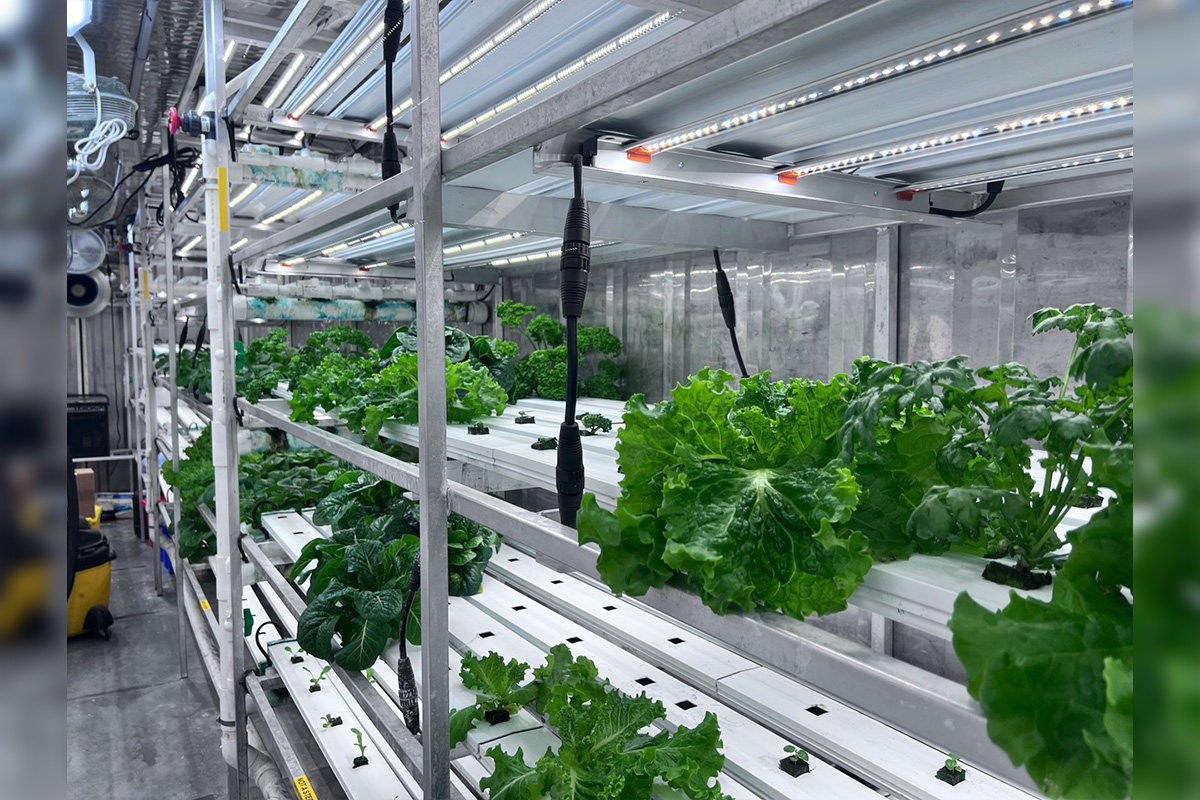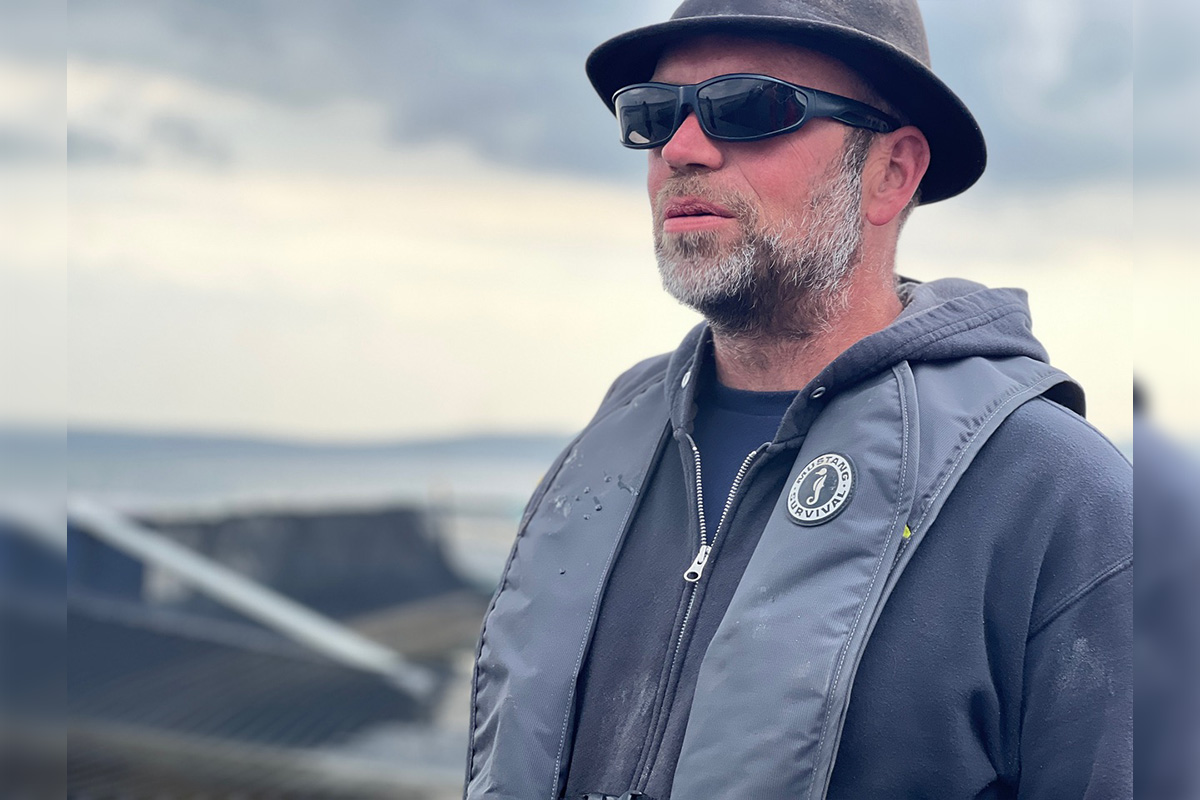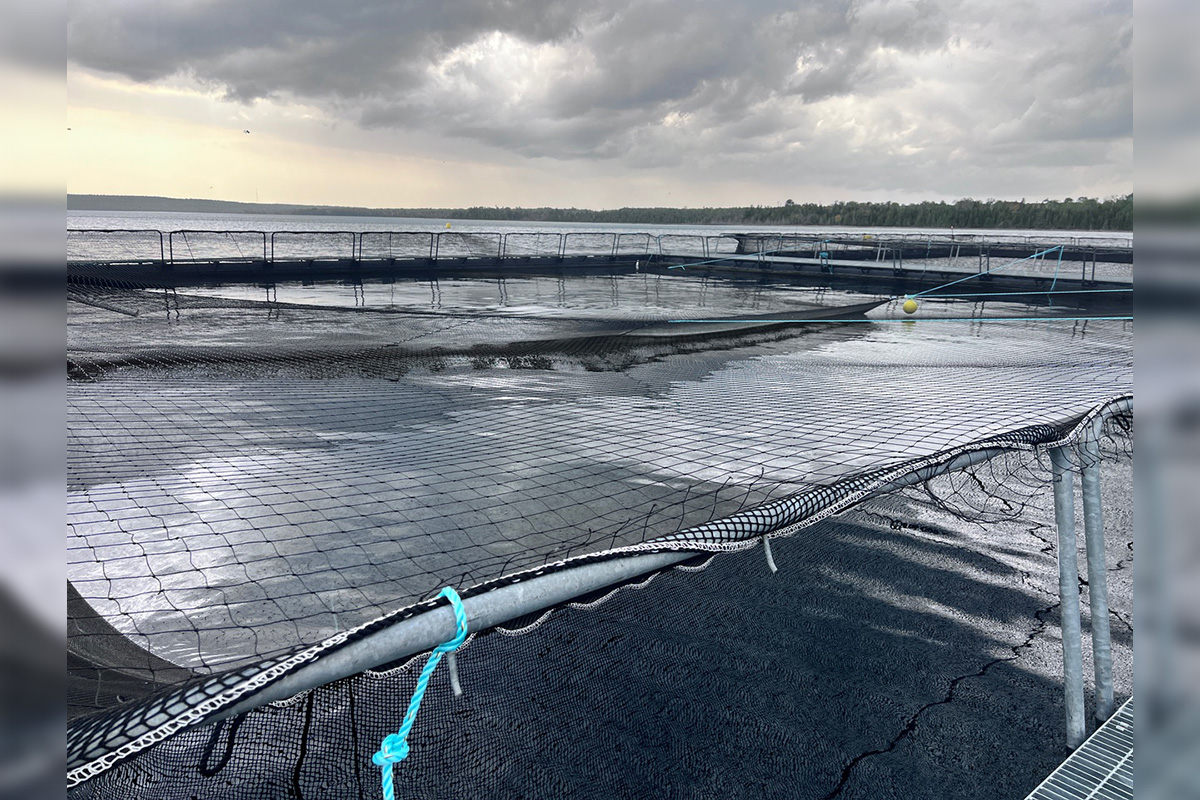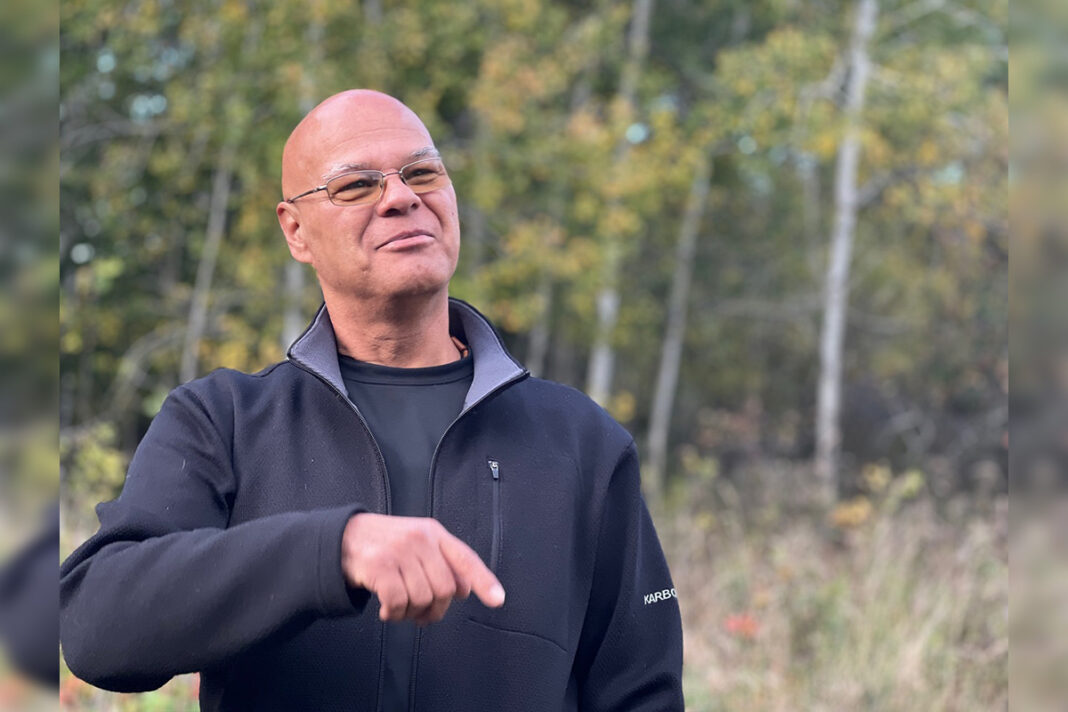SHESHEGWANING—On a day that started under looming dark clouds, the sun broke through over the majestic vistas of Sheshegwaning First Nation, favouring an event that was not only a celebration of food but a profound collaboration between cultures, rooted in sustainability and tradition. Set against a backdrop of lush forests, pristine waters, and a remarkable community, this inaugural event brought together Sheshegwaning First Nation and New Grain Kitchen of Gore Bay, an innovative culinary enterprise, to showcase the rich bounty of the land and waters of Manitoulin Island.
The event was centered around one star ingredient: sushi-grade rainbow trout, farmed in the crystal-clear waters surrounding Sheshegwaning. New Grain’s renowned restauranteur, Genevieve Sartor, made this trout the focus of her sophisticated catering events for the past year, including her restaurant’s menu the previous year. Ms. Sartor, a passionate gastronome with a global perspective, declared this fish to be the best she had ever tasted in her worldwide travels. “I’ve tasted fish in some of the most exquisite places, but Sheshegwaning’s rainbow trout is something truly special,” she said, her voice full of admiration for the pristine environment that produces such exceptional quality.
The collaboration between New Grain, Odawa Island Farms, and the local Sheshegwaning community went far beyond a simple meal. It was an immersive experience designed to educate, inspire, and connect people to the land and its traditions. The day began with a boat tour to the offshore fish farm, where guests saw firsthand the trout swimming in the clear, cold waters. Mike Miske, project manager for Odawa Island Farms, served as the tour guide, sharing insights into the farm’s sustainable practices.
“Offshore farming works well here because the strong, varied lake currents provide excellent water conditions. The fish grow faster and healthier, with better meat quality,” Mr. Miske explained, pointing to the waters surrounding the cages. “But those same currents can also be our biggest challenge, making it hard to access the cages in rough waters. Still, we’ve partnered with Sheshegwaning to complete our business cycle. We have our own factories, we grow our own fingerlings, and now, thanks to this partnership, we can raise our own fish right here.”





The farm operates with a deep respect for the environment, something that aligns perfectly with the values of the Anishinaabek people. Daily checks on oxygen and temperature levels ensure the health and well-being of the fish, and during winter, aeration tubes keep oxygen flowing even under a thick layer of ice. This careful balance of tradition and innovation was echoed throughout the event, which aimed to fuse sustainable Indigenous food practices with local food culture while advocating for food security.
As the boat tour ended, guests were led to the Land First Youth Initiative Food Forest, a project spearheaded by Kiara Genereux, a former sous chef under Joseph Shawana, a renowned Anishinaabe chef from Wiikwemkoong Unceded Territory. Ms. Genereux’s vision for the food forest was rooted in her deep connection to the land and her desire to educate the next generation on sustainable food systems. This forest represents the future, where community members rely on the land in a sustainable way, just like their ancestors did.
Ms. Genereux’s passion for food and community shone through in her collaboration with Ms. Sartor, which began when she reached out to discuss the food forest project. The idea quickly evolved into the full-fledged event that unfolded that day, combining traditional Anishinaabek food practices with the culinary creativity of New Grain Kitchen. Together, they curated a multi-course meal that not only highlighted the local rainbow trout but also featured wild rice, foraged ingredients, and other traditional foods.
“I wanted this event to be integrative, to demonstrate a real commitment to local food, but not just in the sense of supporting young, white farmers,” Ms. Sartor explained. “This is about all of us, in every shape and form we come in, contributing to food security here on Manitoulin. It’s about making sure everyone has a seat at the table.”
For Ms. Sartor, this event wasn’t just about food—it was about creating a space where diverse voices could come together to share stories, knowledge, and meals. “Truth and Reconciliation isn’t just a day. It’s a practice, something we have to do together, day after day. And one of the most powerful ways to foster that connection is by breaking bread and eating fish together.”
The meal itself was a testament to the land’s bounty and the cultural heritage of the Anishinaabek people. Ms. Sartor crafted each dish to reflect the local environment, using ingredients sourced from Manitoulin Island. “Everything on this menu is a love letter—to this place, to the people, to the land. The potatoes come from the Amish, the trout has been smoked here by Kiara and Curtis, and the wild rice sourdough with trout gravlax was inspired by the image of trout swimming among the wild rice fields,” Ms. Sartor explained, her passion evident as she spoke.
As the guests took in the Sheshegwaning community hall, transformed by candlelight and a fine dining atmosphere, Leonard Genereux spoke to the Odawa peoples’ history as traders.
“We used to travel with medicines and natural foods, but we also carried medicines and materials for trade. We set up trade centers where people from different areas would gather. Our reach extended as far as the Ohio Valley and up to Winnipeg. We used water routes for trading, including exchanging buffalo with the Sioux for fish. Conflicts would arise when one side took too much, so we had to regulate ourselves. Sheshegwaning has always been dear to me. When I was a kid, I described it as ‘free.’ Here we aren’t centred on money, we are focused on respect and natural law.”
Each course was not only delicious but also deeply meaningful, reflecting the interconnectedness of the land, the food, and the people who prepared it. “This event isn’t meant to be self-aggrandizing,” Ms. Sartor said. “I’m here to be a conduit, to engage with my environment as much as I can and to facilitate certain things where I can. My hand is guided by what’s available, by the land itself. There’s a kind of poetry to that—an ecosystemic relationship between the food we eat and the stories we tell.”
As guests enjoyed the meal, they were also treated to a tour of Odawa Freshwater Gardens, where Mr. Genereux’s (Ms. Genereux’s father) spoke about the history of the land and the traditional agricultural practices of the Odawa people. “We’re reintroducing practices and plants that sustained our ancestors for generations,” Mr. Genereux said, walking through rows of apple trees, chokecherry bushes, pawpaw and raspberries. “What they did in the past is sustaining us today. We’re just learning as much as we can to carry it forward.”
The conversation revolved around sustainable living, food preservation, and the importance of traditional knowledge passed down from Elders. Mr. Genereux shared stories of how his ancestors lived off the land, planting crops and medicinal plants with an understanding of the natural world that is often lost in modern farming practices. “My grandpa had four acres, and that would feed a family of 14 for a year. That’s the kind of knowledge we need to reclaim—how to live with the land, not just off of it.”
The event also touched on the role of agroforestry and the potential for collaboration with institutions like the University of Toronto, where students might volunteer to learn from the rich traditions of the Sheshegwaning community. “This is about more than just growing food,” Mr. Genereux said. “It’s about growing relationships—with each other, with the land, and with the future.”
By the end of the day, it was clear that this event had accomplished much more than introducing people to the exquisite flavours of Manitoulin Island. It had sparked conversations about sustainability, food sovereignty, and the importance of Indigenous food systems in the broader dialogue around climate change and food security.
Ms. Sartor, reflecting on the day’s success, spoke of her hopes for the future. “This is just the beginning,” she said. “I want to see this grow into something much bigger—where we can truly put Manitoulin on the map as a culinary destination. We have the product, the knowledge and the passion to make it happen.”
As the sun set over the waters of Sheshegwaning, the event left a lasting impression on all who attended. It was a celebration not only of food but of the deep cultural and environmental connections that sustain us all, a powerful reminder that the future of food lies in the wisdom of the past, and in the hands of those who are willing to carry it forward.






